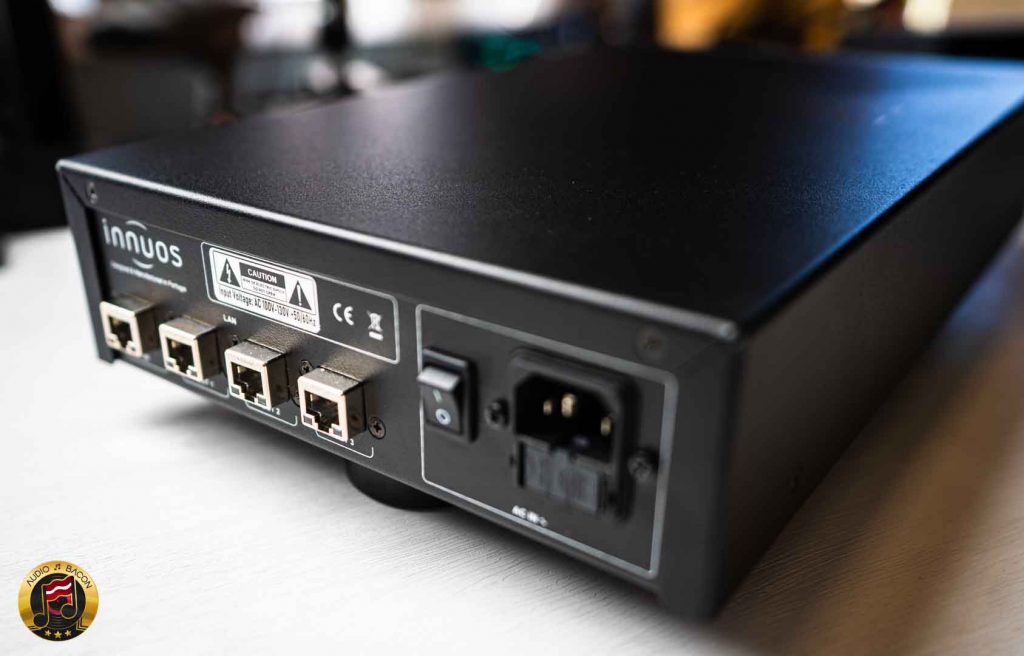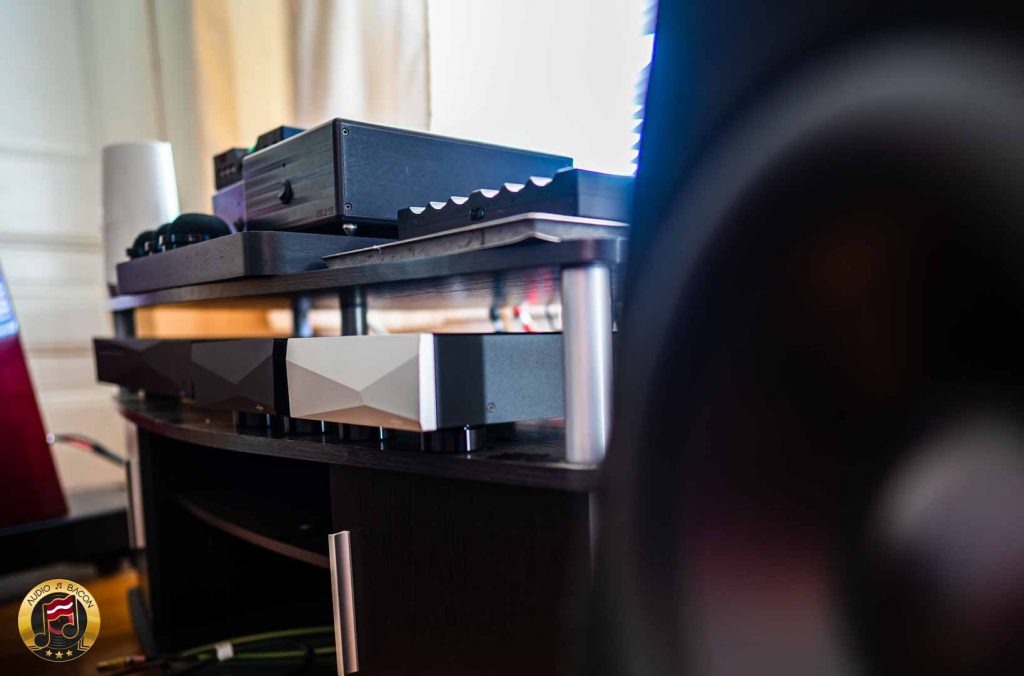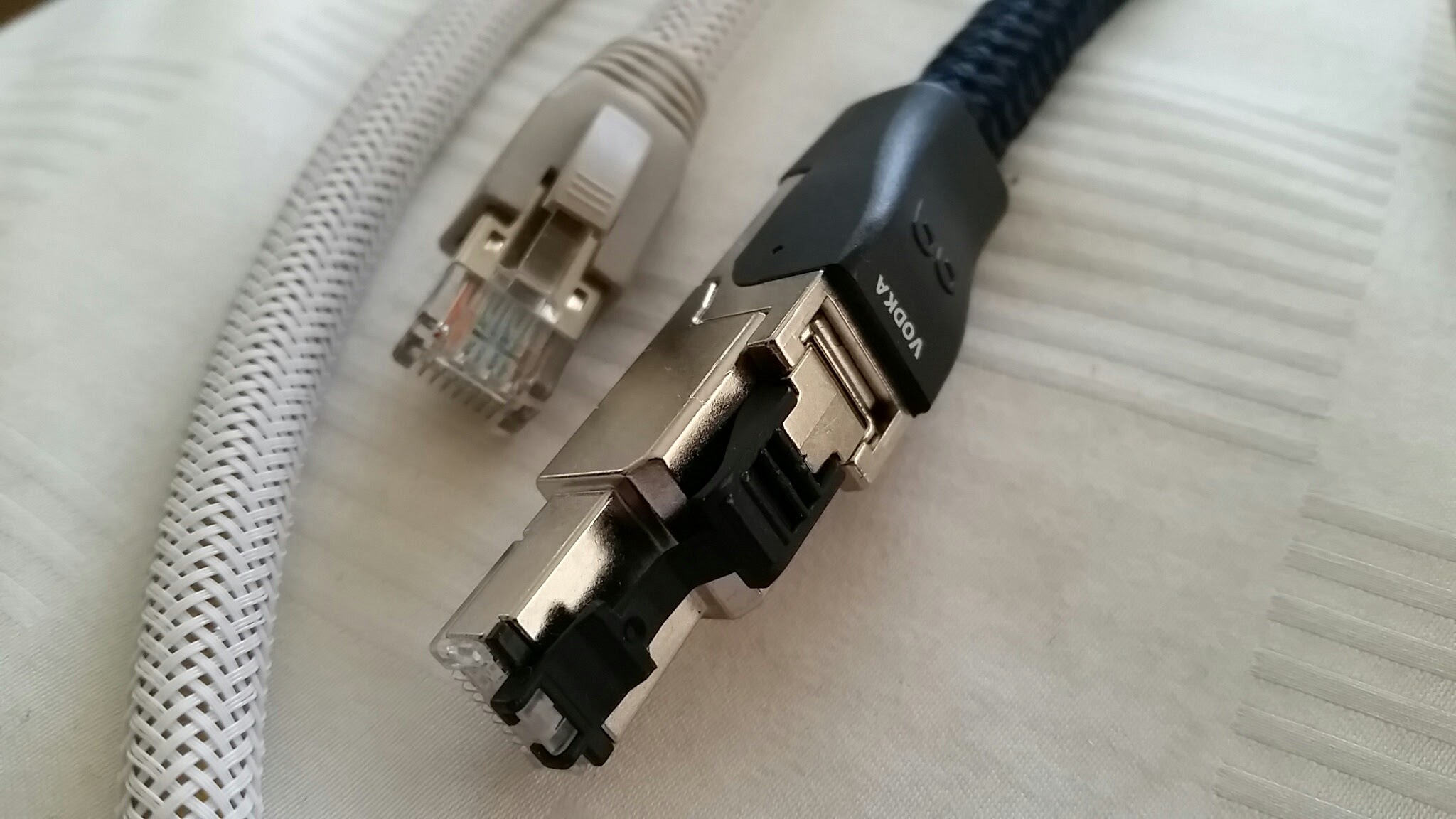Streaming vs. Local
Contents
Many of us either stream from services such as Tidal, Spotify, or Qobuz or from our own network attached storage (NAS). My goal is to find out how much impact the Innuos PhoenixNET has in each scenario. Including how the streaming quality compares to playing music directly from the server itself. For this comparison, I’ve duplicated the same music library on disk and on my local NAS storage. As for Tidal, I’ll be streaming it from my home’s fiber connection.
Just for a point of reference, let’s explore just how much better (or worse) playing a local file on the music server is in comparison to the streamed options. I’ll keep the PhoenixNET connected for this comparison to get an idea of the “best it can get.” Then I’ll remove the PhoenixNET later and assess its impact.
Music server vs. NAS vs. Tidal
Please keep in mind the Innuos music server is connected directly to the Hugo M Scaler for these tests. In most cases, music played directly from the Innuos server sounded better. And when comparing NAS files to Tidal streams, I found that music generally sounds better from the NAS. Logically, this result shouldn’t be too surprising.
However, for some non-MQA tracks on Tidal, certain albums were actually warmer and more organic sounding compared to even music server files. Amber Rubarth’s Sessions from the 17th Ward was one example of this. Although the server files were more tangible…it didn’t have the sweeter sound of the Tidal stream (which I preferred).

A mixed bag…
But the results are a bit mixed. As exemplified by Evanescence’s Fallen album (recently certified diamond by the RIAA). While the NAS version sounds richer and meatier, the local file has more detail, atmosphere, and “pluckiness.” However, when adding the Tidal version to the comparison, it sounds much closer to the local file than the NAS version, albeit a bit leaner, less smooth, and more monochrome. From a technical standpoint, the local file (and thus the Tidal stream) still has the edge in terms of imaging, transparency, clarity, etc. But for this album, I preferred the warmer tonal color of the NAS version over both the Tidal stream and file on server.
Now when I put on Anette Askvik’s Liberty album, the Tidal stream was warmer and meatier, while the NAS version was cleaner but leaner, and the music server file had the right balance between tonal color and clarity. All three sounded good in their own ways – but they were different. Confusing…I know.
Which media is best?
In summary, I found that music server files offered the least sonic compromise by ticking off the most technical boxes. They provided a more solid baseline of clarity, tangibility, and delineation. Allowing you to hear more of what’s happening in the recording and obtain a more sculpted and articulate sound. The transient edges, resonances, and acoustic silhouettes were crisper, more transparent, and simply cleaner. These results aren’t too surprising given the more direct signal path from the server to the DAC.
Music file stored on a NAS might sound better depending on your network and NAS system – and, of course, tastes. In many cases, the same music file was warmer sounding when stored on the NAS and I preferred it for some albums over ones stored locally on the Innuos music server. Again, it was album and seemingly track dependent at times.
And for the most part, streaming from Tidal was the least optimal due to it being consistently less dynamic, tactile, and full. For example in Jesse Cook’s Tempest, the local file had more tangible flair where you could feel the rhythm of the music. On the other hand, the Tidal stream sounds deflated and dull. It doesn’t have the textural nuances and pulsating energy that relays a more alluring experience. Although for specific albums, it does gets close to the performance of a local file. Again, inconsistencies due to many various of a network. And if you didn’t know: whether you have fiber, cable, or DSL internet…your streamed music from services will sound different.

Don’t know what you have til it’s gone…
At this point, although there are differences, music still sounded great across the different modes of playback. But what happens when we remove the PhoenixNET from the chain and reevaluate? Well, local files always sounded better than the files played off the NAS, and the the NAS files always sounded better than the Tidal streams. A lot of warmth and body was lost in the NAS and Tidal streams – and there wasn’t a single case where I preferred them over the local server files.
The Innuos PhoenixNET is obviously significantly bridging the sonic gap between every form of digital playback – which is impressive. But again, like the SoTM sNH-10G, that’s what it was supposed to do as an audiophile switch. So let’s dig a little deeper with direct comparisons.









Thanks Jay for the detailed and wonderful review. I also am considering adding this device to my streaming setup. One question, did you ever have the opportunity to try the Gigafoil v4 Ethernet filter in your system? If so, any comments on how it compares to the PhoenixNET?
Thanks again,
Seph
I have not! I’ll have to look into it. Been out of the loop for a while 😉
I wish Innuos would add SFP to their switches. This is the game changer, and without it I will not now consider a product.
SFP doesn’t always sound better though?
Hey Jay, have you compared the QNet? I own the PhoenixNet, and I love it. But Nordost Qnet with their Qsource PSU has me wondering…how it would compare. Thanks for your amazing work as always!!
Hello
what would you rather recommend?SOtM switch with clock connection and main clockVS INNUOS Phoenix switch?Libe greetings, your tests are awesome
How were you powering the SOtM sNH-10G for your comparison Jay?
Personally, would be very curious to hear the relative difference between the Innuos, and the SOtM at a similar price range — say the sNH-10G + sCLK-OCX10 with with a similar level of power supply (DC3/DC4 etc)!
Powered with a Paul Hynes SR7. Generallyn speaking, the Innuos is denser and richer. With the sCLK-OCX10, the resolution is matched more closely but the tonal color is still very different (SOtM being closer to neutral).
Jay, great review. I was wondering if you have any experience with the Uber popular Etherregen switch?
its always nice having reviews for these very niche products, thanks!
It drives me INSANE that i can hear the difference in hard drives for music. Do you have any recommendations for “”music drives””? Im too broke for a streamer haha
You Audiophiles guys really are the biggest pigeons ever.
Sincerely,
As an electrical engineer how could you recommend such scam? Basic electronics, 100Mb, and you said it, 0 and 1…
And people are buying these…
It passes an exact digital copy. The music isn’t fuller, richer and in anyway different than a $100 switch.
Sorry to disappoint you all. If you know networking protocols and have sniffing hardware you can monitor the error rate to prove that it isn’t any better. The timing of the digital music is not controlled by the switching hardware, the data is buffered and the DAC at the end of the digital chain times the data conversion.
Do not forget the 2000$/€ ethernet cable too, otherwise the 0 and 1s will become 2. How stupid can people get?
I have had the PhoenixNet for several years. It made a very large improvement in my chain from the moment it was plugged in (it was already burned in as a demo).
P.S. It looks as if some ASR followers have posted this month. Too bad.